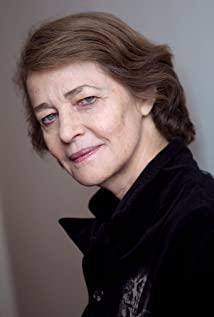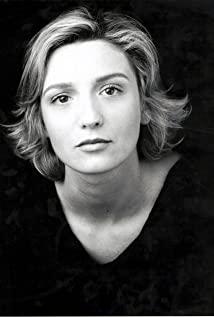Inscription:
"We leave something of ourselves behind when we leave a place; we stay there, even though we go away. And there are things in us that we can find again only by going back there." ― Pascal Mercier, Night Train to Lisbon
Switzerland, the northern foot of the Alps, where the Rhine originates. The ancient European city of Bern is located on this mountain plateau. The Aare, a tributary of the Rhine River, surrounds the north and south of Bern on three sides. There is a lot of precipitation here, the climate is cold and cold all year round. Latin teacher Raimund, a 57-year-old divorced and boring old man living alone, hurriedly walked on the arched bridge across the Aare on another cold rainy morning. The Aare River seems to have cut through the Bernese Plateau, sinking deep between the two banks. From the bridge, the dark green water is very low and far away, wide and turbulent. The rain water wet the long hair of a young woman, the thick and lush long hair that is characteristic of Mediterranean women. Her long hair followed the rain and stuck to her long soaked crimson windbreaker. Her face, like a white marble statue, has the kind, upright, long face that is unique to Mediterranean women, and the skin is white and firm. Raimund rescued her who was about to commit suicide, and accidentally saw a book she was reading, so the story of "Night Train to Lisbon" began.
This movie has four clues, telling a history that is almost forgotten by people. Of course, the witnesses and creators of this history, whether they are still in this world or not, are also forgotten at the same time. However, it is precisely because of this forgetting that people can continue their lives. When Raimud read the book left by the woman on the Berne Bridge, took the European train at night, from Berni, through France, Spain, to Lisbon in Portugal, he also took these four clues to the forgotten era. Picked up and lively life.
The first clue is that in Portugal in the early 1970s, on the eve of the "Carnation", the far-right Salazar regime was almost fascist. The long-term overseas colonial war caused a social crisis in Portugal, and more and more people and the middle and lower classes. The soldiers were dissatisfied with this social situation, the resistance movement was surging among young people and intellectuals in Lisbon, and the secret police of the Salazar regime became more and more closely tracking and suppressing the resistance movement.
The second clue is love. Resistance movement member Jorge loves Estefania. Estefania in the movie has the dark brown hair of a Gaul woman, a thin and tight face, and his eyes are calm and beautiful. When Jorge's friend, Amadeu, who is also an activist of the resistance movement, came to Jorge for a secret meeting, Estefania took away Jorge's hand on her shoulder, stared at Amadeu dreamily, stretched out her hand, and gently stroked Amadeu. Face.
The third clue is that Amadeu is a doctor, a revolutionary, a thinker, and a writer. He wrote a book "UM OURIVES DAS PALAVRAS". "If there is not much life left in us, what we can do, what we should do, can we discover the true meaning of our life, and make our life take a completely different path from the previous time in the future. "The words in this book, in the 1970s of the Portuguese Revolution, infected young people from the resistance movement, Estefania, and Amadeu’s sister Adriana; similarly, today, they are also infected by the cold rain on the Bern Bridge. The woman with black hair and red dress and Raimud in the night train to Lisbon.
For the fourth clue, Raimud met Mariana, a female ophthalmologist in Lisbon. Mariana's face is slightly plump and slightly smiling. When she was wearing glasses for Raimud, she was sitting upright with her legs slanted together. Her legs are those of a middle-aged woman. They are not thin and stiff like the legs of a young woman. Mariana's legs are plump and white, which makes people feel gentle and gentle. Affinity. When sailing through the wide rivers of Lisbon, the bright sunlight of the Mediterranean was shining. Mariana and Raimud, who had just met, sat together, so natural and relaxed, and the joy of the heart flickered slightly on Mariana's face along with the bright sunlight. Mariana's legs are still slanted and close together. Under the sun, they are plump and energetic. It is a kind of energy that has been lost in life, but is gradually burning again. This kind of vitality is on Mariana’s legs, in Mariana’s smiling eyes, and Mariana said to Raimud with an appreciative smile: “When you’re not boring.”
These four clues run through, and it’s this movie. The whole plot is gone, let's not go into details. In terms of the promotional brief of this film, it is the story of friendship and family, love and jealousy, loyalty and betrayal, repression and revolution of several young people in the historical background of the "Carnation Revolution" in the early 1970s.
Thirty years later: Joao can no longer hold the coffee cup with both hands. He said that when the wooden hammer of the Lisbon Secret Police broke his hand, it also smashed his spirit, because, his hand , Is the hand that plays Mozart piano; Adrina always wears black clothes, and keeps the furnishings of the house when her brother Amadeu and all the books. She gathered the words written by her brother and compiled this book "UM OURIVES DAS PALAVRAS" ; Jorge can no longer talk about this history. He said that we can only move on if we bury history; Estefania still has charming eyes, charming, living alone, working as a history teacher in the small Spanish town of Salamanca. She later attended Amadeu's funeral with a scarlet carnation. She said that the soldiers on the secret list she wrote down later launched the Carnation Revolution, and Amadeu died on the same day of the revolution.
end:
"When we leave a place, we also leave who we were. Only when we come back here, we will discover that we have been here before." ― Pascal Mercier, Night Train to Lisbon
View more about Night Train to Lisbon reviews










